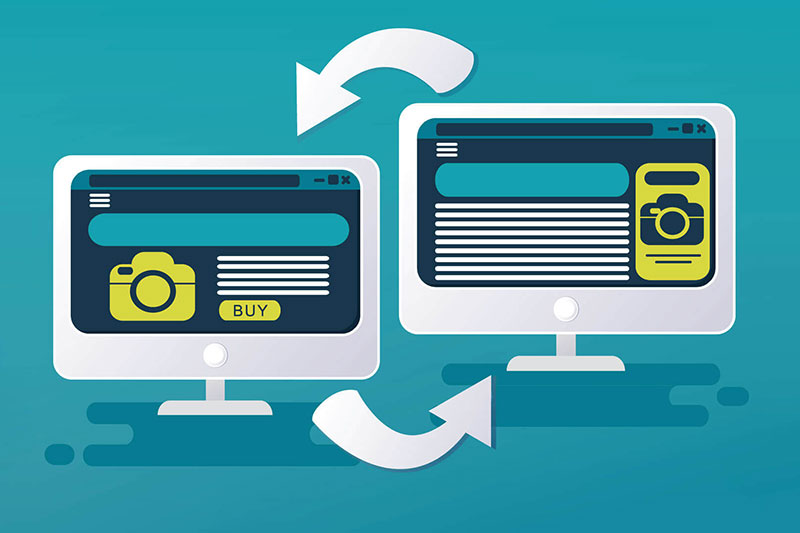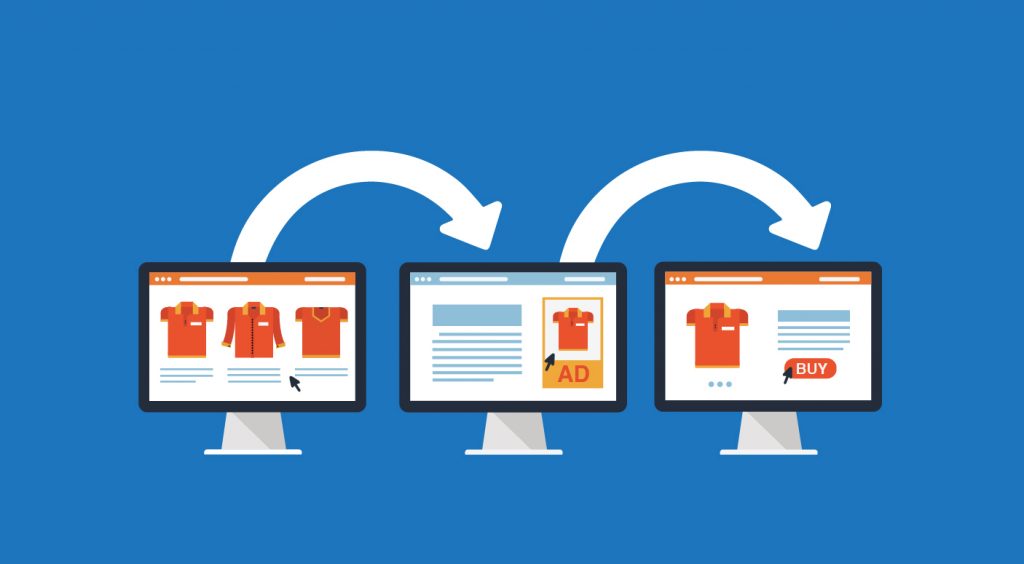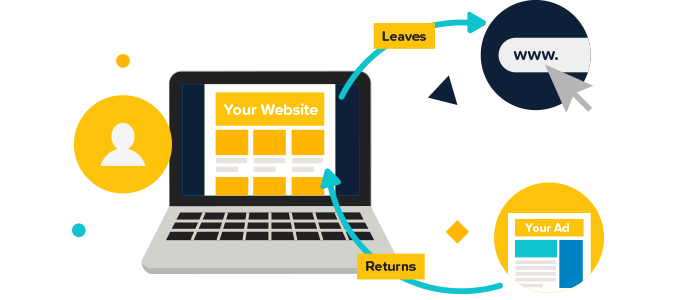Remarketing: What is and how it can boost your sales
One of the most important tools of digital marketing, Remarketing is a powerful way to connect with those who visited your site and realized it or not, some action.

Understand what is and how Remarketing works
Remarketing is a tool that allows the display of content and ads to anyone who has had contact with your site.
As its name implies, remarketing means making marketing again to the same person.
Did not understand? Let’s take an example and soon you will realize that not only do you know what it is as you are a common “target” of this marketing strategy.
Example: You google search for some sneakers. Soon, several shoes websites appear in search options. You visit some, purchase, or give up, and ten minutes later forget about it and enter a new search for dog food. The interesting part of this new search, is that in addition to dog food, another product is flashing on a side of the page. What? The sneakers! You leave the site and go to Instagram. What appears as a sponsored ad? Yeaph, the sneakers. Then you think that Skynet is in action, we are being watched by the machines and domination is near. It could be that, but it is actually only remarketing.
Native function of Google Adwords, Remarketing works by taggins. When a visitor accesses a website, he is “tagged” by a cookie that is saved on his computer.
This cookie works by increasing the number of advertisements that appear when the user visits other sites displaying Google ads.
Who advertise on Google Adwords can choose to display its publication in two different networks: Search and Display.
The search network are the results pages that appear when someone does a search. The display network are all the sites, blogs and social networks that provide space for the Adwords ads.
As you can see, it is almost impossible to escape the remarketing, which makes it a killer strategy.
How to use the Remarketing

Although it seems a simple strategy to implement, is necessary a planning for effective results.
Your remarketing ads can appear on any site that accepts Google advertising, but you can choose so that they appear only on specific sites.
Like other digital marketing strategies, your plan needs to be designed to reach consumers who are in different stages of the sales funnel.
– Digital marketing to promote online courses
For this, use the remarketing lists system, something similar to the segmentation of email marketing.
Remarketing lists
This lists aim to separate your site visitors based on the type of action that they performed.
For example, who bought something, who searched for a product category, who entered something into the cart and abandoned, etc.
To guide your remarketing actions, see some examples of lists you can create:
- Who visited your site;
- Who visited more than three pages of your site;
- Who bought more than US $ 100;
- Who signed your newsletter;
- Who clicked the link in your profile on social networks;
- Who have downloaded an e-book or other material.
Lists and plan created, it’s time to start implementing your strategy, and that’s where cookies come in.
Functioning as a kind of “flag” cookies are stored on the visitor’s computer, linked to a tag inserted in your site code.
The remarketing tag tells AdWords to save visitors to your “known category list.” When people access this page, the cookie ID is added to the remarketing list.
Then, when the visitor access other sites, Google will identify the cookie and display ads that you have determined when creating the campaign.
For your investment to be successful, it is important ensure that: a) the ad is highly relevant to your target audience; b) contains something attractive to encourage them to come back to your site, for example, a special offer.
Ways to do remarketing with Google AdWords
As already mentioned, the remarketing was created by Google Adwords and the options for using this tool are not few.
Here are some ways to apply its strategy according to Google:
- Standard remarketing: show ads to previous visitors as they browse other sites and apps in the Display Network.
- Dynamic Remarketing: improve your results with Dynamic Remarketing, which focuses on adverts for products or services that people have seen your site or application.
- Remarketing lists for ads on the Search Network: show ads to previous visitors as they continue their searches on Google.
- Video remarketing: Show ads to people who interacted with your videos or your YouTube channel.
- Customer remarketing list: with a customer segmentation list, you can upload data lists provided by your customers. When these people are connected to Google, your ads will appear.
Most remarketing ads are produced in text and / or image and are managed by AdWords. Currently, animated banners with videos and gifs are gaining popularity.
There are a number of standard sizes to create these ads, and it is recommended that companies produce at least four or five in the most common formats.
The size and design options are determined by the space allocated to sites that accept advertising on the display network.
These publications allow further elaboration, such as the use of images and effects and therefore are more striking and attractive to the user.
On other hand, the remarketing on the search network is focused on the search that the visitor is doing, ie their willingness to click is higher.
What are the advantages of Remarketing?

Much more focused than a traditional campaign ads, remarketing drives and displays your ads only to those who came to your site.
It’s for this reason that the remarketing conversion rate tends to be higher than the rate of ads campaigns in general.
Another advantage is that the frequency of display is much higher, so the consumer does not forget so easy from your website and offer.
In the case of visitors who abandoned the cart, for example, remarketing can give the push that was missing for them to return and finalize the purchase.
Among all the benefits of this strategy, we can highlight:
- Access to people at the right time: you reach people who have interacted with your company when they are doing research and are likely to buy.
- High power targeting: create remarketing lists for specific cases. For example, a list for people who added something to their shopping cart but did not complete the transaction.
- Range widely: your ads are displayed on more than two million websites and mobile apps.
- Facility to create ads: create free image ads, text and video with Google Adwords Ad gallery.
- Campaign statistics: access to performance reports, information on where the ads are displayed and how much is being paid.
Now if you are wondering how Google promotes remarketing on such a large network of sites, know that this is because the search giant has ties to thousands of websites that participate in its affiliate program worldwide.
These sites give space to display ads, and in return, receive a value for each click (Display Network).
Of course that Google tries to optimize the most your results, so he seeks place ads on sites that have a theme related to your product / service.
In case if you are advertising a clothing item, it will display your advertisement in clothing stores, shoes and fashion in general.
Thus, in addition to promoting the advertiser, the seeker tries to give the user something he really has interest, which greatly increases the chances of conversion.
Facebook also has tools for remarketing and works much like Google.
The difference is that the Facebook lists are made from the user ID, phone numbers or emails.
Google Remarketing changes in 2018
There were two major changes in the remarketing this year, both of which give people more control over the ads they see.
First, Google is starting the implementation of a feature by which users can silence remarketing ads for 90 days, if they considered them very repetitive or irrelevant.
Second, a recent version of Apple’s operating system (MacOS 11) introduced a feature called Intelligent Tracking Prevention.
As the name suggests, people who use the Safari browser will have all the tracking cookies off after just 24 hours. The only way to be reactivated a cookie is if the user makes a new visit to the site.
This raised the following question by companies: “How will we be able to tell if someone sees our ad and makes a purchase after the first 24 hours?”
In response, Google has said it is updating cookies AdWords for everything (ie ‘conversion attribution’) function normally.
However, companies will notice a good drop of activity due to lack of tracking Safari users.
To get an idea, almost half of mobile users use Safari because of the iPhone, and over half of all traffic is now mobile.
How integrate remarketing with your inbound marketing strategy

You can combine remarketing with inbound marketing to create a very powerful disclosure strategy.
Basically, instead of creating ads promoting products, your campaign must promote content.
– How to use Inbound Marketing
So you convince your audience to come to you, making it one assiduous consumer and a potential lead.
Remarketing can even be combined with the techniques of landing page to capture audience and generate leads.
Using this strategy you create more opportunities for the consumer enter and advance in your sales funnel, while building your relationship with him.
For those who create online courses, this is a great way of capturing and retaining students.
While remarketing is ideal to present your course and attract new visitors to your page, inbound actions focus on keeping consumers interested in your product / service.
With a well planned strategy in a short time you will have your first students.
Complete elearning platform, Coursify.me is the ideal solution for those who want to create, sell and promote courses on the Internet, without having to invest to start their own business.
Attending companies and professionals in more than 60 countries, Coursify.me is a dynamic and customizable learning management system.
– Whats is a Learning Management System
Visit our website, test the platform and see how easy it’s to profit by doing what you love.

